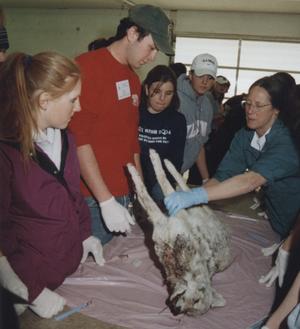No easy answers to animal diseases

Problems such as chronic wasting disease in deer and elk and mad cow disease still have researchers baffled, those attending the National Pre-Veterinary Symposium at Chadron State College in early March were told.
“There are no easy answers,” said Dr. Beth Williams, a veterinarian and University of Wyoming professor who is involved with the research. “We have no treatments or vaccines for these diseases and they are difficult to diagnose.”
The good news is, while the diseases are similar in the way they affect the animals, they apparently are not transmissible to other species.
Williams said cattle have been placed in confined areas with deer and elk that have chronic wasting disease for prolonged periods in both Colorado and Wyoming, and the cattle have shown no signs of contacting the illness.
Scrapie, which has affected sheep and goats worldwide for many years, is a similar disease that Williams discussed. Although hard evidence has not been found, researchers are still trying to determine if there is a link between the three diseases, all of which affect the nervous systems and result in distinctive lesions in the brain.
In each case, as the disease lingers, the animals won’t interact with one another or their caretaker and lose their coordination and conditioning.
It is known that mad cow disease is transmitted by contaminated feed. Some 200,000 cattle in 20 countries have been infected. The greatest impact was in the United Kingdom, but the epidemic has declined, Williams said.
Chronic Wasting Disease was first detected in captive deer and elk in Colorado in the late 1960s. Within the last five years, it has been found in several Rocky Mountain states and their neighbors, including Nebraska, and as far away as Wisconsin, Illinois and Canada.
Williams said it appears that CWD is environmentally transmissible, possibly through the feces, but his has not been proven. She said density of the animals may be a factor. It is hoped that in the wild there won’t be a carryover once the infected animals have been removed for a time. There is no evidence that CWD is a threat to humans.
Category: Campus News, Physical and Life Sciences
